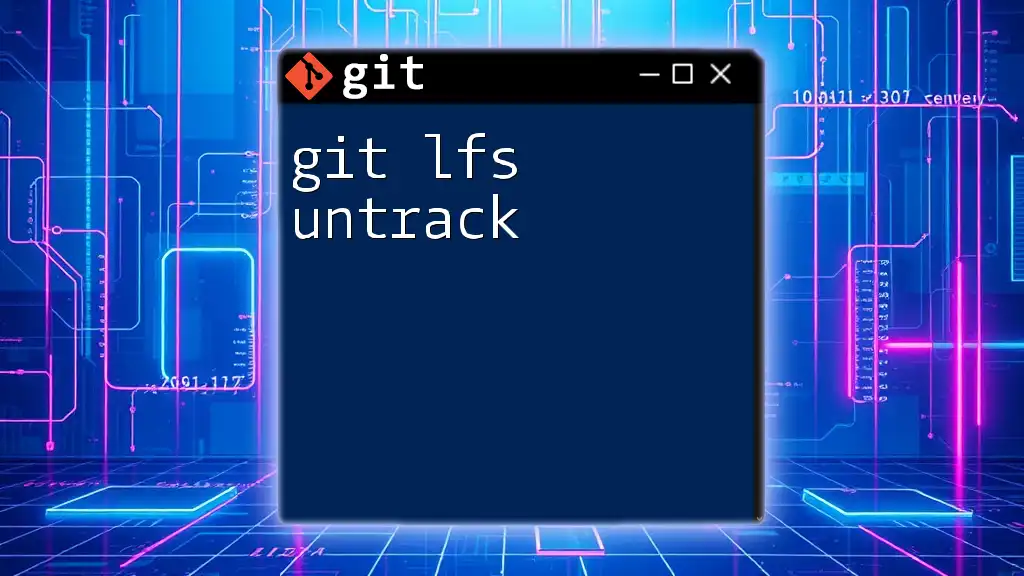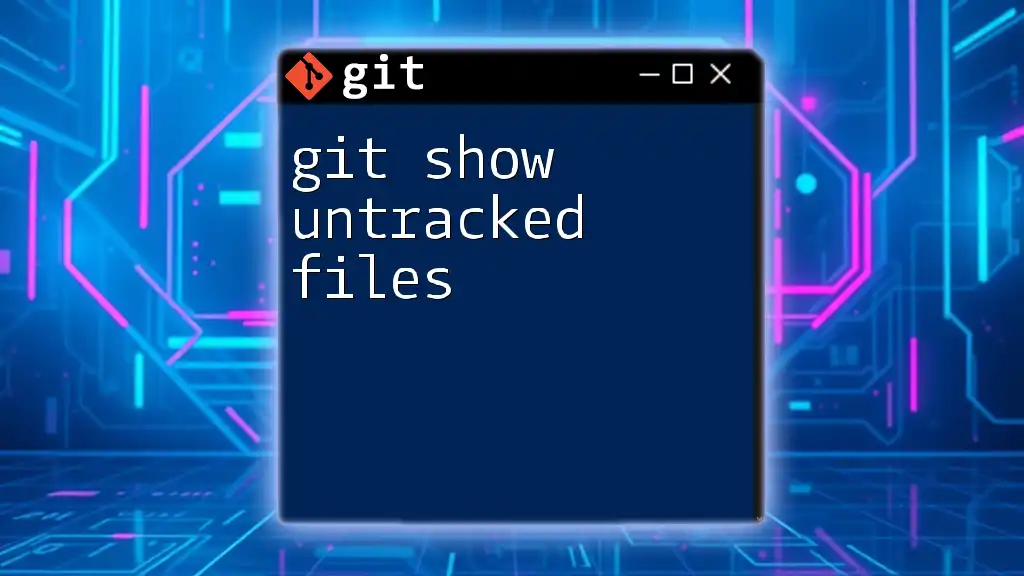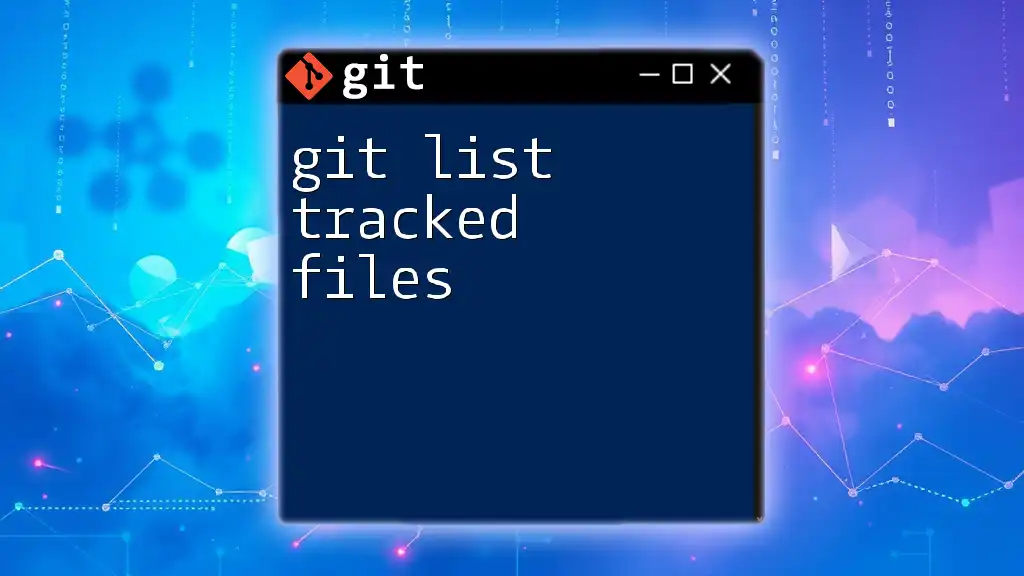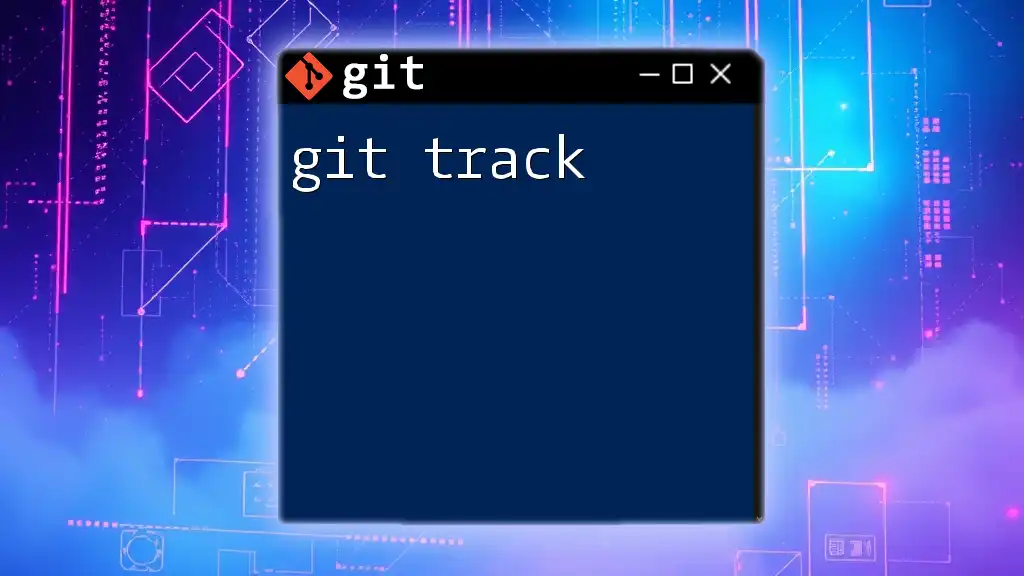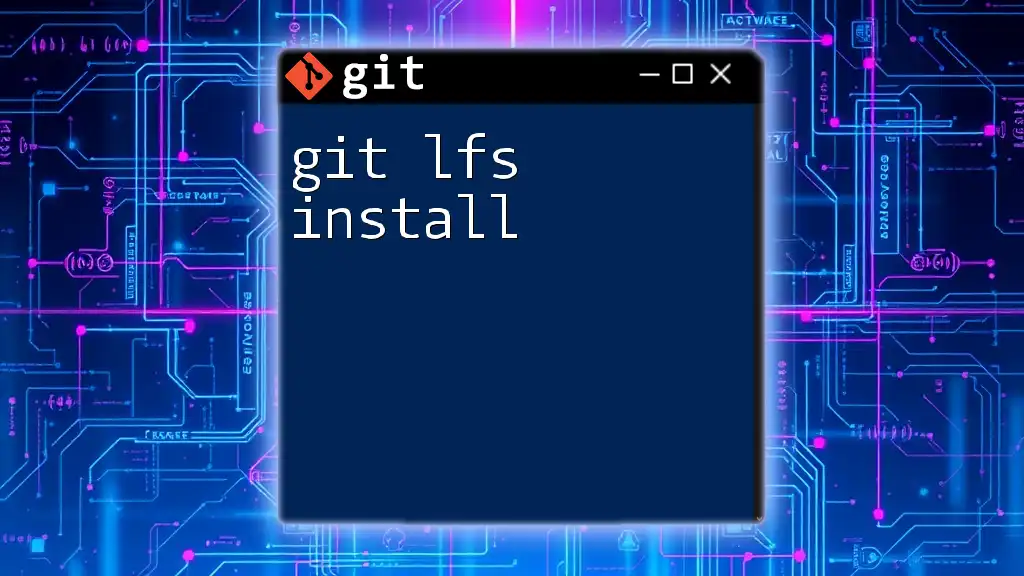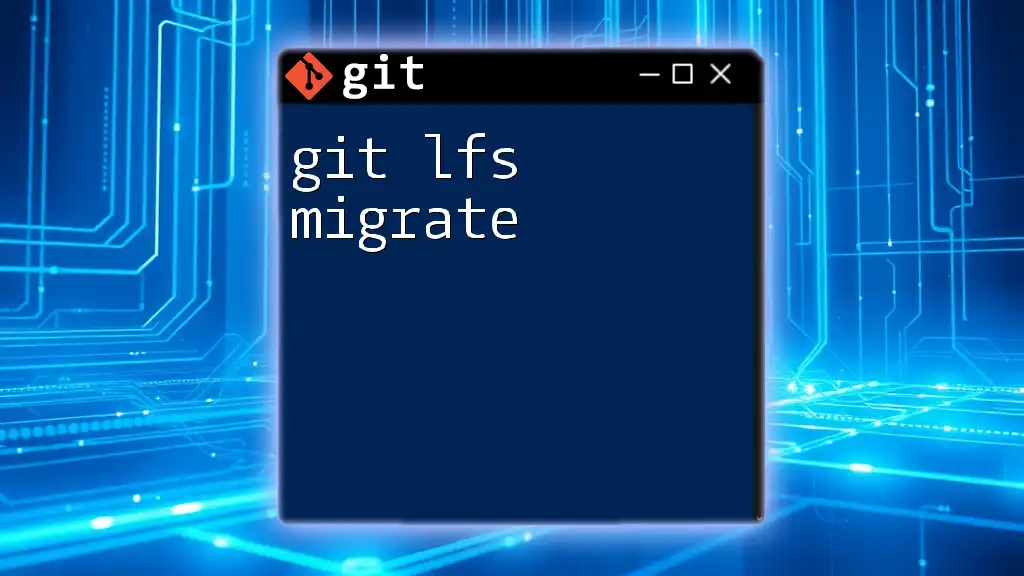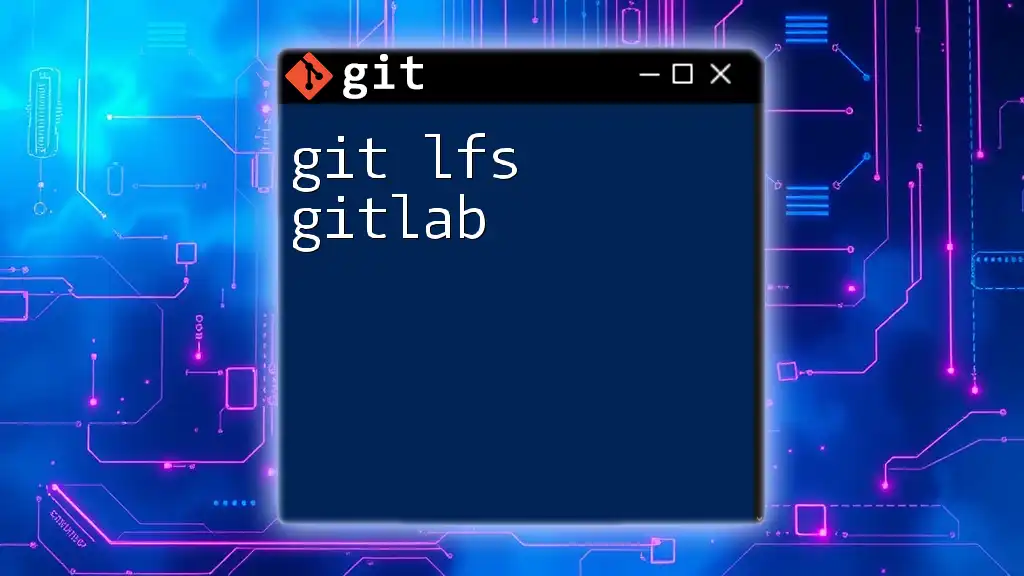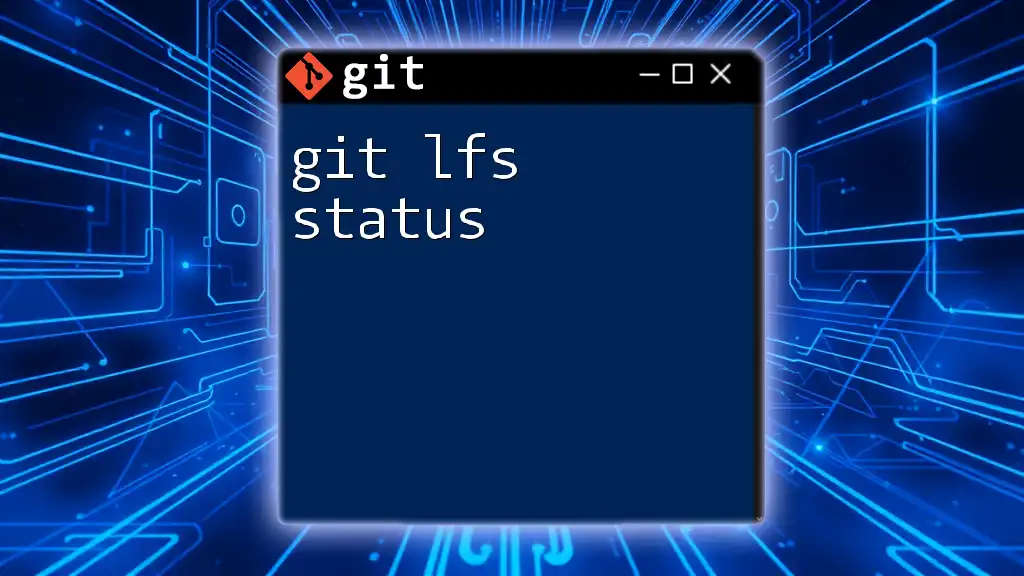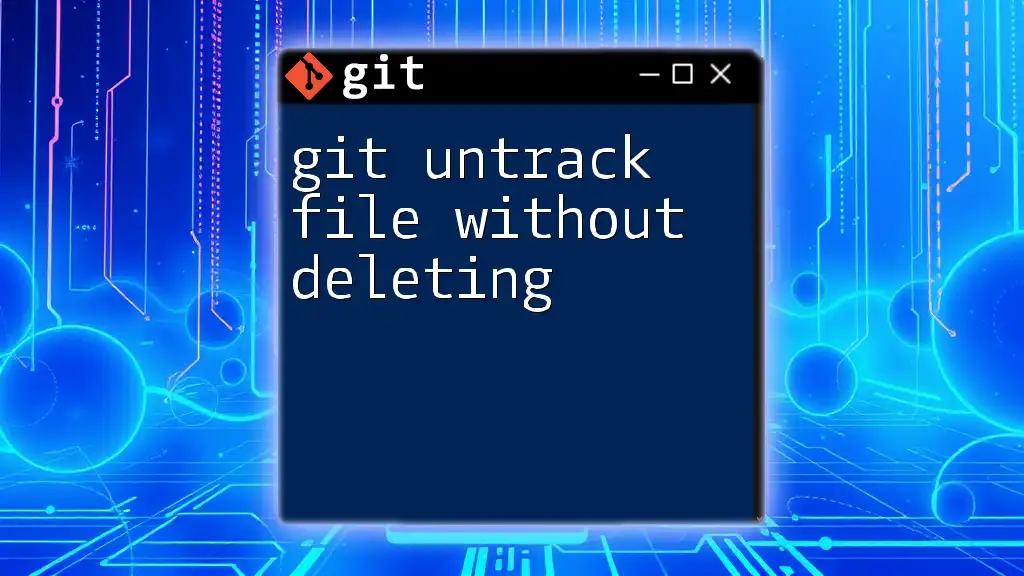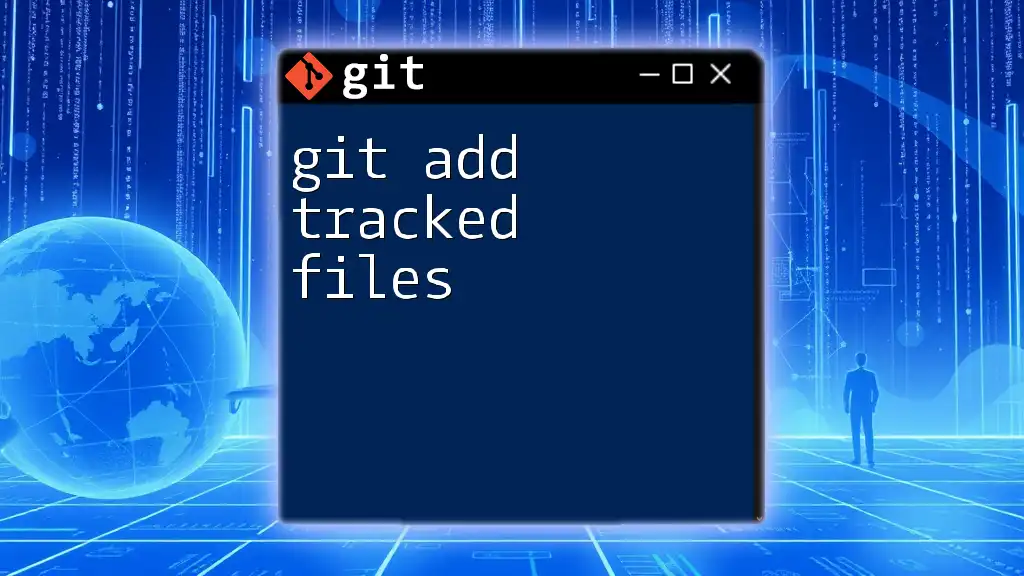The `git lfs untrack` command is used to remove a file from being tracked by Git Large File Storage (LFS), returning it to regular Git tracking.
git lfs untrack "path/to/your/file"
Understanding Git LFS
What is Git LFS?
Git Large File Storage (LFS) is an extension for Git that facilitates the management of large files within your projects without slowing down your repository. Instead of storing large binary files directly in your Git repository, Git LFS replaces them with lightweight pointers that reference the actual files stored externally. This not only optimizes the performance of your repository but also simplifies collaboration on projects that involve large assets, like videos, graphics, or datasets.
Why Untracking Files in Git LFS?
Untracking files in Git LFS might be necessary for several reasons. Perhaps the project has changed direction, and certain files are no longer needed, or you may want to return to tracking files with regular Git commands for various administrative reasons.
When you untrack files, you modify the way they are managed in your repository. It is crucial to understand the implications this has on your local environment and your collaborators, as any file you untrack may still exist in others' clones of the repository until they also untrack or remove it.
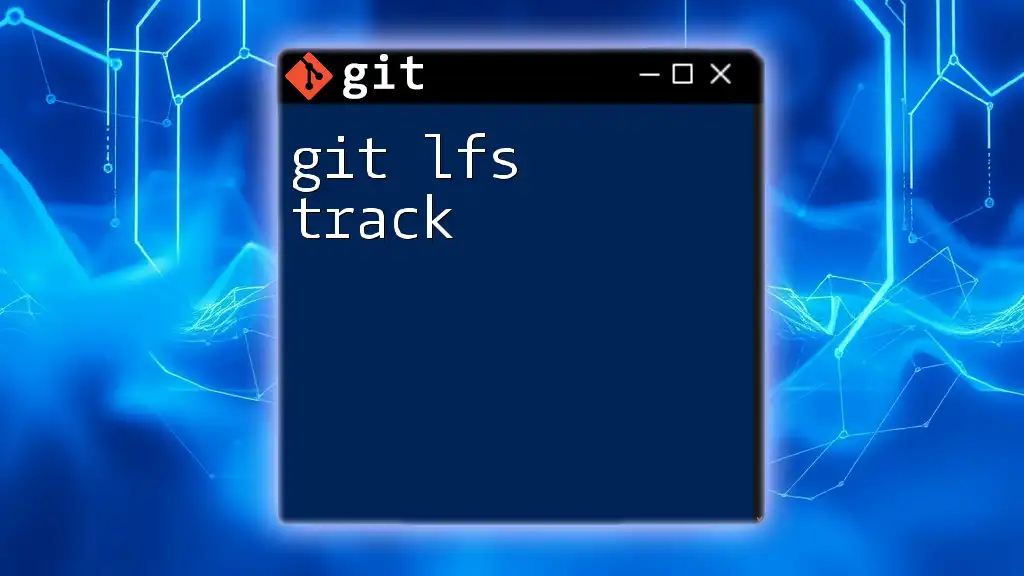
Preparing Your Environment
Prerequisites
Before you dive into the `git lfs untrack` command, it’s essential to ensure that you have the following set up:
- Git: Make sure Git is installed on your machine. You can verify this by running `git --version` in your command line.
- Git LFS: Ensure that Git LFS is installed and initialized in your repository with `git lfs install`. This prepares your repository to handle large files correctly.
- Basic understanding of Git commands: Familiarity with Git concepts such as commits, branches, and the command line will help you follow along more easily.
Setting up a Sample Repository
To begin, create a new Git repository if you don't already have one. You can do this using:
git init my-repo
cd my-repo
Next, you can add files to Git LFS:
git lfs track "*.psd"
This command tells Git LFS to track all Photoshop files within your repository. You can confirm the current tracking status with:
git check-attr -a

How to Use Git LFS Untrack
Basic Syntax of `git lfs untrack`
The command to untrack a file with Git LFS is simple, but it carries weight. The basic syntax is:
git lfs untrack <filename>
This command removes the file from LFS tracking, meaning it will no longer be treated as a large file by Git.
Step-by-Step Guide to Untrack Files
Step 1: Identify Staged or Tracked Files
Before using the `untrack` command, you might want to identify which files are currently tracked by LFS. You can do this by running:
git lfs ls-files
This will output a list of files currently managed by Git LFS, allowing you to select which file(s) you wish to untrack.
Step 2: Untrack a Specific File
Now that you have identified the file(s), you can proceed with untracking a specific file. For example, to untrack a file named `image.psd`, you would run:
git lfs untrack image.psd
Upon executing this command, the file `image.psd` will no longer be tracked by LFS. It is critical to remember that untracking does not delete the file from your directory; it merely changes how Git tracks it.
Step 3: Verifying Changes
After untracking, you should verify what has changed in your `.gitattributes` file (which Git uses for LFS tracking). Use:
git status
This command will display modified files, including the `.gitattributes` file where the tracking rule for `image.psd` has been removed.
Step 4: Committing Changes
To finalize the untracking process, it's essential to commit the changes you made. This includes modifications in the `.gitattributes` file. Do this by running:
git commit -m "Removed image.psd from LFS tracking"
This step ensures that your changes will be recorded in the version history.

Post-Untracking Tasks
Deleting Existing LFS Pointer Files
After successfully untracking a file, you may need to address existing LFS pointer files. To remove the pointer from the staging area but keep the local copy, you can run:
git rm --cached image.psd
This command will ensure that the LFS reference is deleted while leaving your working directory intact.
Cleaning Up LFS Storage
Cleaning up LFS storage can be essential to reclaim space, especially after untracking files. You can remove any LFS objects that are no longer referenced with the command:
git lfs prune
This command cleans up LFS storage by deleting any objects that are not referenced by any commits in your Git history. Make sure to use this command judiciously!

Common Issues and Troubleshooting
Error Messages During Untracking
While untracking files, you might encounter various error messages. Common errors include attempts to untrack files that are not currently tracked by LFS. If you receive such an error, double-check with `git lfs ls-files` to confirm the tracking status of the file before retrying.
FAQ on Git LFS Untrack
Frequently asked questions often revolve around the impact of untracking files on collaboration or how to revert if something goes wrong. Understanding that untracking is a local operation is vital; it does not remove the file from other collaborators’ repositories until they also perform the untrack operation.
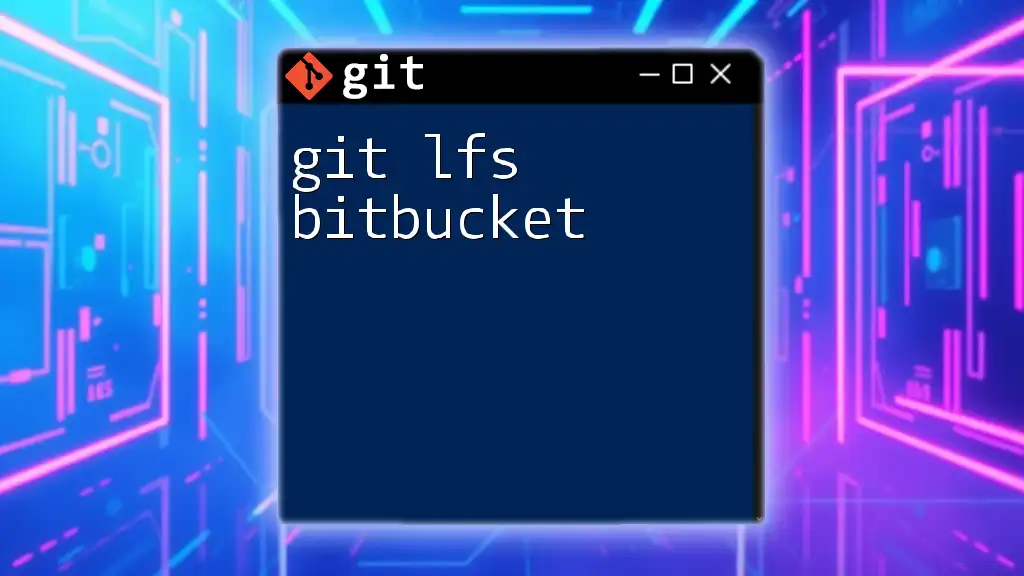
Best Practices for Using Git LFS
Regular Maintenance of LFS Files
To maintain a healthy repository, regularly check the files in LFS using:
git lfs ls-files
This practice allows you to keep track of large files and make necessary adjustments.
Collaborating with Teams
When working within a team, clear communication regarding the use of Git LFS is crucial. Make sure all team members understand when and why to use LFS, as well as the consequences of untracking files. Establish best practices for file management that all members can adhere to, ensuring a smooth workflow.

Conclusion
Recap of Key Points
To strengthen your understanding, remember that using `git lfs untrack` allows you to manage how files are tracked in your Git repository more effectively. The untracking process involves identifying tracked files, running the command, verifying the changes, and committing your updates to ensure consistency in your project.
Call to Action
Now that you have a comprehensive understanding of the `git lfs untrack` command, try applying it to your own projects. Explore Git LFS further to enhance your workflow, and consider checking out additional resources to deepen your knowledge in version control.

